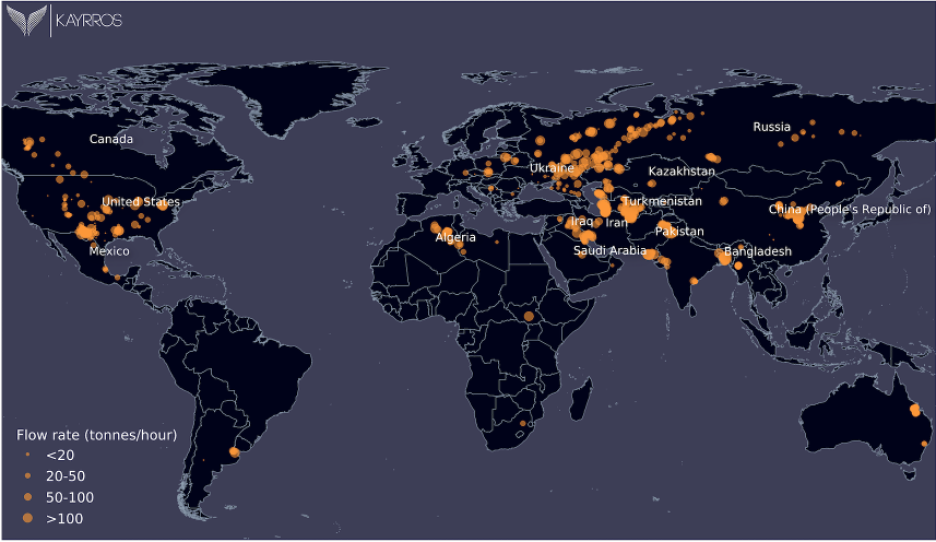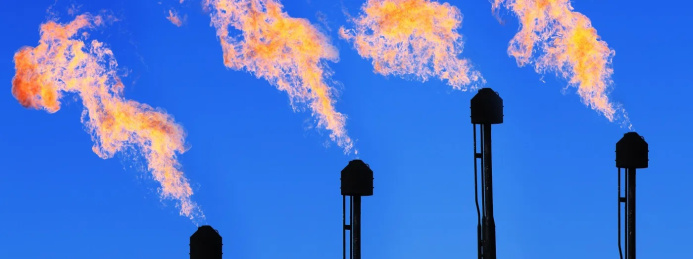
Environmental engineering company Kayrros Methane Watch in Paris uses satellite data and artificial intelligence models to accurately monitor leaks of methane, a potent greenhouse gas released by fossil energy sources.
These invisible columns of odorless gas in the air appear on the company’s maps as colored clouds after processing satellite images, Agence France-Presse reports.
Since 2019, Kayrros has tracked nearly 10,000 methane concentration events around the world. Such leaks occur when “pressure problems are detected in the gas pipeline” and valves are opened “to avoid the risk of explosion,” data scientist Alexis Grochenry explains.
Methane, which has a shorter lifespan than carbon dioxide, has greater warming potential and is responsible for about 30% of global warming since the Industrial Revolution. The International Energy Agency (IEA) indicates that 40% of methane emissions from fossil energy production (coal, oil and gas) can be avoided at virtually no cost. But they need to be properly tracked and measured.
At its headquarters, Kayrros uses data from nine satellites owned by governments or official space agencies such as the European and American space agencies, which send their images to Earth at different frequencies, several times a week or every 15 minutes. The challenge for green technology “mathematicians” is that “there is a very large amount of data to process because it is impossible to simply look at all the images.”
This is where artificial intelligence comes into play. “To process these volumes of data, we build artificial intelligence and deep learning models and then train them so they can automatically perform the monitoring task,” Grochenry says.

Deep learning is a category of artificial intelligence that was invented long before generative AI and is a supercomputing method focused on training “deep neural” networks.
The monitoring model must study “billions of data” to learn to recognize different methane plumes, even small ones or those that are difficult to see, such as due to dim lighting or clouds.
“To properly train a monitoring model, we will generate a number of fictitious but physically plausible data using simulation algorithms,” the data scientist says. The model is then validated after testing it on real methane leak data.
The company also uses the latest developments in generative artificial intelligence to provide analytics based on simple questions.
The International Energy Agency, which methane estimates are 50% higher than the UN’s, praises the reliance on a growing number of advanced satellites that monitor methane leaks, such as MethanSAT, Google’s artificial intelligence-powered satellite that launched in March.
Using these satellites will allow the International Energy Agency to verify recent commitments by oil and gas companies to reduce methane emissions to near zero.
Orient Link: https://orient.tm/en/post/71145/artificial-intelligence-helps-monitor-methane-leaks

